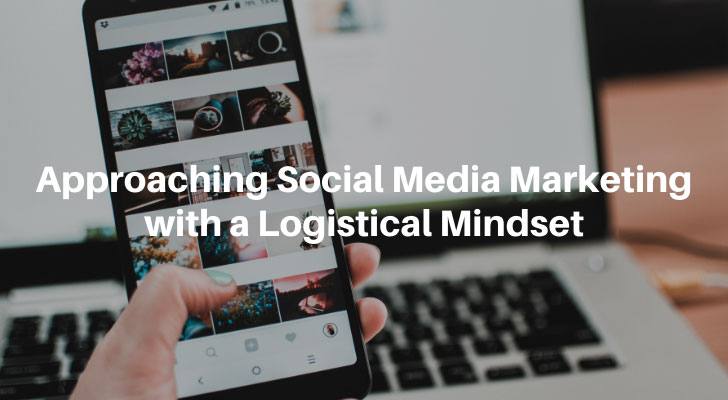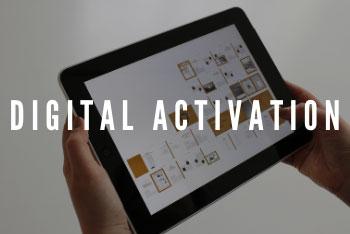Social media is often seen as a marketing opportunity that hinges on spontaneity and excitement. Concepts like organization, structure, and coordination are often shoved to the back burner in favor of focal points like creative content, customer engagement, and social interactions.
While all of the latter are crucial elements to social media success, though, skimping on the logistics end of things can be detrimental to your social media strategy. If you feel that your company’s social media efforts feel scattered, confused, or uncoordinated, here are a few suggestions for ways that you can revamp your approach with more of a logistical mindset.

Take the Time to Research Your Audience
Social media is a form of content marketing in nearly every sense of the word. It revolves around strategically creating and distributing online content.
However, to be effective, both of those activities must start with having a clearly defined target audience for your marketing campaign. You can create masterful content with gripping messages, but if it’s inspired by or presented to the wrong crowd, it isn’t going to resonate with anyone.
If you want to truly apply logistics to your social media efforts, the first thing that you have to do is take the time to define, understand, and prioritize your target audience. This doesn’t mean make some emotionally-based decisions about what you think your ideal customer’s behaviors or interests are. On the contrary, you must go about your research in a measured and purposeful manner by:
- Studying your industry: What kind of problems do consumers come to your industry to solve? Are you a counselor that provides emotional support? Are you a retailer that makes clothes? What are the customer needs that keep your industry alive?
- Studying your competition: What companies are thriving in your niche? What are they doing well? What doesn’t seem to be working for them?
- Gathering feedback from existing customers: If you already have customers, don’t hesitate to ask them for feedback. Look for positive reinforcements to identify what you’re doing right. Parse through constructive comments to see what you can improve.
Once you’ve taken the time to thoroughly research your industry, competition, and existing customers, create a semi-fictitious buyer persona to exemplify your ideal customer and their wants and needs. Then make sure to update that persona regularly.
Find the Right Platform
Clearly defining your target audience is a crucial first step. Once you have a clear image of who it is that you're marketing to, it’s time to identify where on the internet they tend to congregate. This is a part of logistics marketing known as digital activation. Digital activation consists of three main stages in which you:
- Identify the digital assets, online communities, and social media platforms that can integrate most effectively with your marketing strategy.
- Set up the communities, perfect the platforms, and create the digital assets that have been identified as particularly valuable.
- Communicate these new assets and platforms with consumers that you want to reach with your marketing content.

A key part of digital activation revolves around choosing the right social media platform. This can be challenging, as it involves several different factors. The first and most important question to ask is where your ideal customers tend to congregate. There is plenty of research regarding which demographics tend to use which platforms the most. For instance, if you want to reach seniors, Facebook is by far the most heavily used platform, whereas Instagram is the best option for young adults.
Along with the audience itself, it’s also important to consider what platforms accommodate your marketing message. For example, on the one hand, a news outlet may want to use Twitter for concise, fast-paced, text-based reporting. On the other hand, a retailer may wish to utilize the visual power of Pinterest or Youtube to show off its wares.
As you consider which platforms are used the most by your audience as well as which ones particularly lend themselves to your marketing content, you can ensure that you’re using the most effective social media options available.
Build a Strategy and Get On a Schedule
When approaching social media from a logistical perspective, organization is everything. A scattered and incoherent company social media account will be extremely ineffective at communicating your brand’s values, marketing messages, and company promotions.
If you want your social efforts to genuinely generate results, you should do two things:
- Build a strategy: A good social media strategy is essential for sustained success. This should both be consistent within itself and integrate with your other marketing efforts. In other words, your strategy should create a set of guidelines that help your social content maintain a consistent voice, tone, and overall message.
- Get on a schedule: Constantly creating social media content is exhausting. By getting onto a social media schedule, you can ensure that you’re regularly creating, posting, and promoting original content that is cohesive and collaborates with your other marketing collateral.
By putting together a sound strategy and sticking to a schedule, you can ensure that your social media efforts remain organized and effective.
Set Metrics and Track Everything

Finally, it’s always important to track the effectiveness (or lack thereof) of your social media efforts. Big data isn’t just for internal activity, it’s a critical part of the marketing process as well. Tracking important pieces of information, such as customer behavior, can enable your team to see what content performs better than others.
The specific data analytics tools that you use to track your social efforts will vary, but programs like Google Analytics and Facebook Pixel can provide voluminous quantities of data. Additionally, requesting customer feedback via surveys and questionnaires is also a great way to gather information.
By garnering feedback on various customer factors, such as behavior, opinions, mindsets, problems, and needs, you can utilize the information to inform and improve your social media strategy in the future.
Logistics in Social Media
Logistics isn’t always associated with social media. Nevertheless, when left unaddressed, it can lead to inefficient strategies and even harmful activities. Ill-informed content can fail to resonate with your audience, time and effort can be invested into the wrong social media platforms, and customer questions, feedback, and needs, in general, can go unmet.
However, if you use logistics to bring a sense of organization, information, and analytics to your social media strategy, you can maximize your chances of sustained success far into the future.

Author Bio: Adrian Johansen
Adrian Johansen writes to both teach and learn. She draws from her experiences in marketing and business to offer others insight and points to consider. You can find more of her writing on Twitter and Contently.
